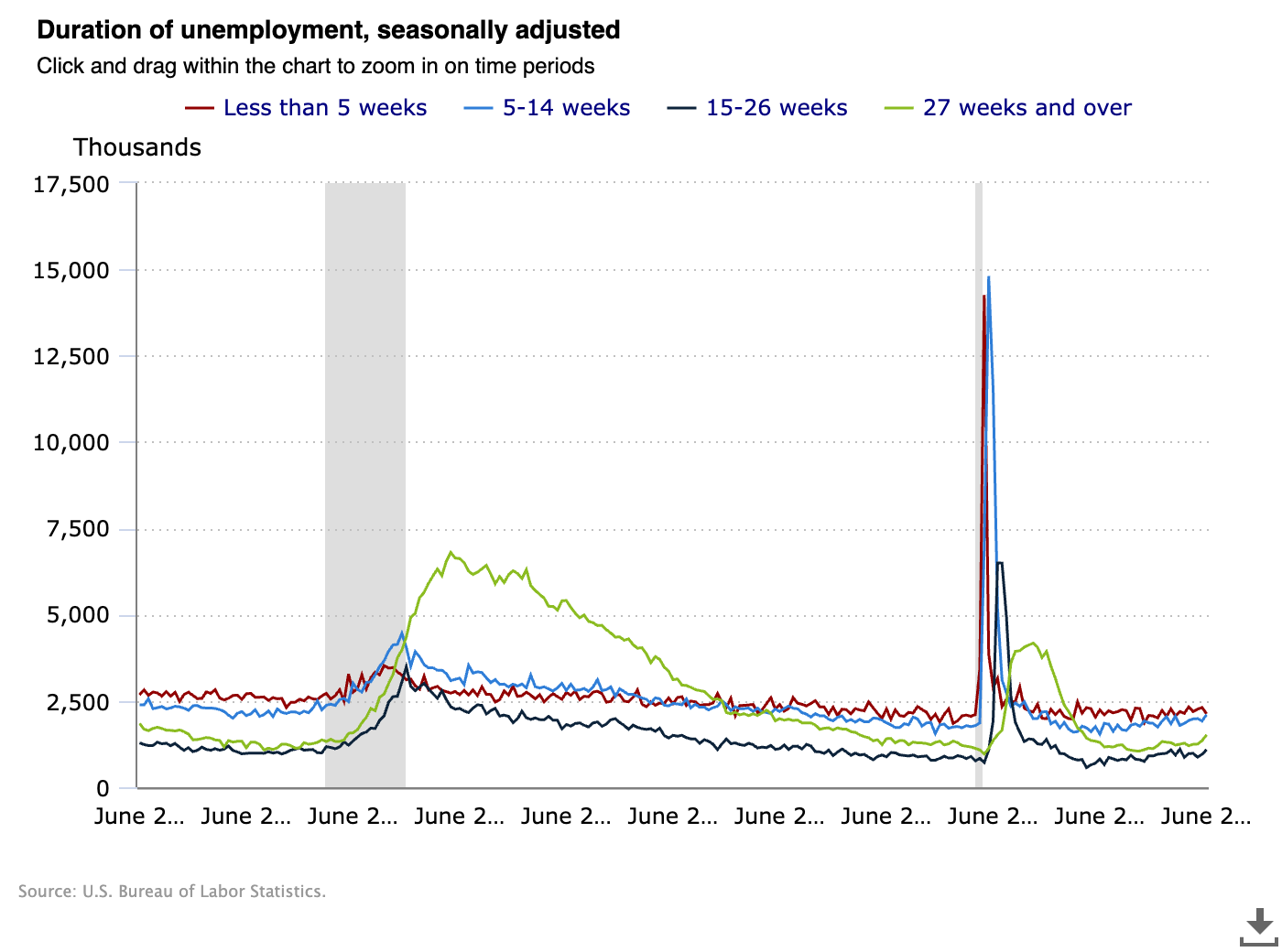What to Do When You Lose Your Job: A Comprehensive Guide to Navigating Unemployment and Finding Part-Time Work

Losing a job can be one of the most stressful and challenging experiences in life. Whether it’s due to layoffs, company restructuring, or other unforeseen circumstances, the immediate aftermath often leaves individuals grappling with uncertainty. However, this period can also be an opportunity for growth, self-reflection, and strategic career planning. This guide will walk you through practical steps to take when you lose your job, with a particular focus on finding roles while in between jobs and leveraging the flexibility of part-time remote work.

Understanding Unemployment: Statistics and Realities
Unemployment is a common economic condition, and understanding its dynamics can help you navigate this phase more effectively. According to the U.S. Bureau of Labor Statistics (BLS), the average duration of unemployment was about 20.6 weeks as of the most recent data (Bureau of Labor Statistics) (Bureau of Labor Statistics). This means that many individuals spend nearly six months without full-time employment, making it crucial to find alternative ways to support oneself during this period.

The Financial Impact of Unemployment
Unemployment benefits provide a safety net, but they are often limited in both duration and amount. For instance, in the United States, unemployment benefits typically last for 26 weeks, and the average weekly benefit amount is around $370 (Bureau of Labor Statistics). This can be insufficient to cover all living expenses, especially for those with higher financial commitments. Consequently, it’s worth considering part-time remote roles to supplement income during this transitional phase.

The Benefits of Unemployment
While being unemployed can be daunting, it also offers several benefits that can be leveraged for personal and professional growth.
Time for Self-Reflection and Skill Development
One of the most significant advantages of unemployment is the time it provides for self-reflection and skill development. This period allows you to assess your career goals, identify areas for improvement, and acquire new skills that can enhance your employability. Online courses, certifications, and workshops are excellent ways to make productive use of this time.
Flexibility to Explore New Opportunities
Unemployment provides the flexibility to explore new career opportunities that you might not have considered otherwise. This could include freelancing, part-time roles, or even starting your own business. According to a study by Upwork, the freelancing economy is growing rapidly, with over 59 million Americans freelancing in 2020, contributing to nearly $1.2 trillion in annual earnings (Bureau of Labor Statistics). This indicates a robust market for freelance and part-time work, which can be a viable option during unemployment.

Finding Roles While In Between Jobs
The job search process can be overwhelming, but with a strategic approach, you can find suitable roles that match your skills and career aspirations.
Networking and Building Professional Relationships
Networking is one of the most effective ways to find new job opportunities. According to LinkedIn, up to 85% of jobs are filled through networking. Reach out to former colleagues, attend industry events, and join professional groups to expand your network. Platforms like LinkedIn, Meetup, and professional associations offer numerous networking opportunities that can lead to potential job openings.
Utilizing Job Search Platforms
Online job search platforms are invaluable resources for finding part-time and remote roles. SideRamp, for example, specializes in connecting job seekers with remote and flexible job opportunities. By creating a profile on SideRamp, you can access a curated list of job postings that match your skills and preferences. Other notable platforms include Indeed, Glassdoor, and FlexJobs, which offer a wide range of job listings across various industries.
Tailoring Your Resume and Cover Letter
A well-crafted resume and cover letter are crucial in making a strong first impression on potential employers. Tailor your resume to highlight relevant skills and experiences that match the job description. Use quantifiable achievements to demonstrate your value. For example, instead of saying, "Managed a team," say, "Managed a team of 10, leading to a 20% increase in productivity."

The Flexibility of Part-Time Remote Work
Part-time remote work offers several advantages, particularly for those in between jobs.
Balancing Job Search and Employment
Part-time remote roles provide the flexibility to balance job search efforts with employment. This allows you to maintain a steady income while actively seeking full-time opportunities. According to a report by FlexJobs, 58% of workers believe that flexible work arrangements lead to better work-life balance, which can be particularly beneficial during a job search.
Enhancing Skills and Experience
Part-time work can also enhance your skills and experience, making you more competitive in the job market. It provides opportunities to learn new tools, adapt to different work environments, and build a diverse portfolio of experiences. For example, working part-time as a content writer can improve your writing and research skills, which are valuable in many full-time roles.
Leveraging SideRamp for Job Opportunities
SideRamp is a premier platform for finding part-time and remote job opportunities. It is designed to connect job seekers with employers who value flexibility and remote work. Here’s how SideRamp can help you during your job search:
Access to Curated Job Listings
SideRamp offers a curated list of job postings, ensuring that you only see relevant and high-quality opportunities. This saves time and effort, allowing you to focus on applications that are a good fit for your skills and career goals.
Personalized Job Matching
SideRamp uses advanced algorithms to match you with job opportunities that align with your profile. By providing detailed information about your skills, experience, and preferences, you can receive personalized job recommendations that increase your chances of finding suitable roles.
Networking Opportunities
SideRamp also offers networking opportunities through its community of job seekers and employers. By engaging with the community, you can build valuable professional relationships, gain insights into industry trends, and discover hidden job opportunities.

Top 5 Sites for Market Data on Job Trends
For comprehensive market data on job trends, here are five of the best sites:
- U.S. Bureau of Labor Statistics (BLS): The BLS provides detailed statistics on employment, unemployment, wages, and other labor market dynamics. It’s an essential resource for understanding economic trends and job market conditions.
- Pew Research Center: This nonpartisan think tank offers in-depth reports on a variety of topics, including labor market trends, economic policies, and demographic changes that impact employment.
- National Bureau of Economic Research (NBER): NBER conducts economic research and provides working papers and data on labor economics, productivity, and other relevant topics.
- Economic Policy Institute (EPI): EPI focuses on economic policy and provides research on wages, employment, and economic inequality, offering valuable insights into labor market trends.
- Federal Reserve Economic Data (FRED): Managed by the Federal Reserve Bank of St. Louis, FRED offers a comprehensive database of economic data, including employment statistics, economic indicators, and other labor market information.

Conclusion
Losing a job can be a challenging experience, but it also opens up new opportunities for growth and development. By leveraging the benefits of unemployment, finding part-time remote roles, and using platforms like SideRamp, you can navigate this transitional phase effectively. Remember to stay proactive, build your network, and continuously enhance your skills. With the right approach, you can turn this challenging period into a stepping stone for a successful career.
References
- U.S. Bureau of Labor Statistics. (2023). Duration of Unemployment
- Upwork. (2020). Freelancing in America: 2020
- FlexJobs. (2021). The Benefits of Flexible Work
- LinkedIn. (2019). The Networking Secrets of Successful People
By following these steps and utilizing the resources available, you can effectively manage the period of unemployment and find opportunities that align with your career goals. Stay positive, stay proactive, and use this time to invest in yourself and your future.




